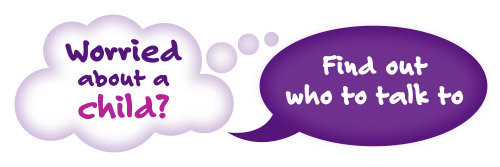Latest stats on children in care prompts some interesting questions
Statistics rarely, if ever, provide answers. Their function is to point us towards the right questions, so that through further enquiry we can understand what's going on behind the numbers.
Each year the Scottish Government releases official statistics about children and young people living in and leaving care. Having just produced a briefing on the stats for 2014-15, a few questions jumped out at me.
Use of Compulsory Supervision Orders is declining. Why?
This year's data tells us that the proportion of children who are looked after under a Compulsory Supervision Order – a legal order issued by a children's hearing - has declined noticeably over the past few years, from 74% in 2012-13, to 68% in 2014-15.
This could be linked to the rise in the number of children provided with accommodation through a direct arrangement between the family and local authority (up from 13% to 15% over the same period). Or it could be connected to the rise in the number of Permanence Orders. Or both. Or neither. It would be interesting to know.
Most intriguingly, the use of Compulsory Supervision Orders with no condition of residence (which means that the child or young person continues to live 'at home' with one or both parents) has declined much more steeply than Compulsory Supervision Orders which places the child with alternative carers (i.e. foster care). Perhaps this means the option of 'looked after at home' is now being seen differently in Scotland, by social workers or children's hearing panel members? And if this is the case, why?
Some stats don't quite ring true, why?
Elsewhere in the stats, some certainly raise eye brows, failing to ring true with what we know from experience or other sources.
For instance, just 13% of looked after children were recorded as having an additional support need in July 2015. On the basis of other stats (such as the school census data), the considerable research evidence on the subject, and my own experience working in the sector for a few years now, this figure seems much too low. Indeed, when you take into account the wide variations reported between individual local authority areas, it doesn't seem plausible.
Many looked after children and young people have experienced some form of trauma in their lives, with ongoing consequences for their emotional and mental health. Does this suspect figure just mean that local authorities have issues in how they are recording the data? Or is it something more serious, linked to the number and/or quality of physical and mental health assessments being carried out?
Kids are coming into care earlier and staying for longer. Good news?
The statistics for 2014-15 may not provide definitive proof of anything, but they do add further weight to suggestions that Scotland's care system is changing in a certain direction. Perhaps the most important trends observed are that children now consistently come into the system at an earlier age than they did 10 years ago, and then stay in care for longer.
The proportion of children leaving care after 5 years or more has increased significantly over the past decade. This suggests that, although it is essential that continue to improve how families are supported in order to ensure children can be kept safe and well without the need for state care, it is equally important that we keep improving the quality of care which looked after children receive. Unfortunately, statistics won't tell us whether we're achieving this. But the latest set hints that we're making progress on a number of fronts, and not enough progress on others. That certainly encourages me to go out a find out and ask why.
Read our analysis of Scottish Government Social Work statistics, 2014-15
And talk to us, what questions are you interested in?
The views expressed in this blog post are those of the author/s and may not represent the views or opinions of CELCIS or our funders.
Commenting on the blog posts
Sharing comments and perspectives prompted by the posts on this blog are welcome. CELCIS operates a moderation process so your comment will not go live straight away.


